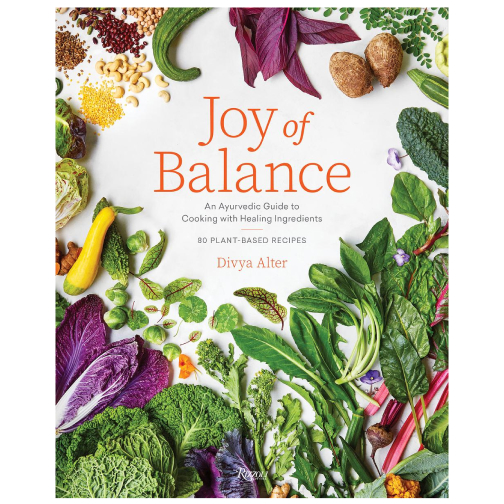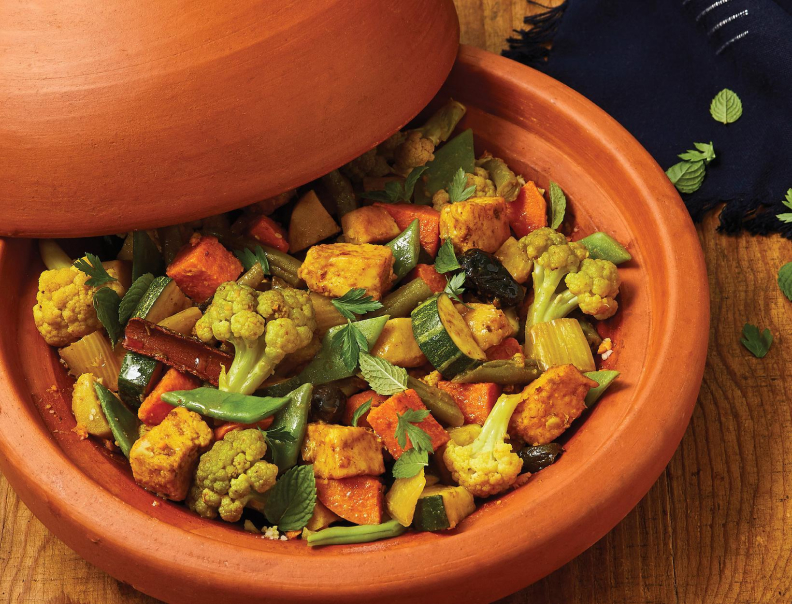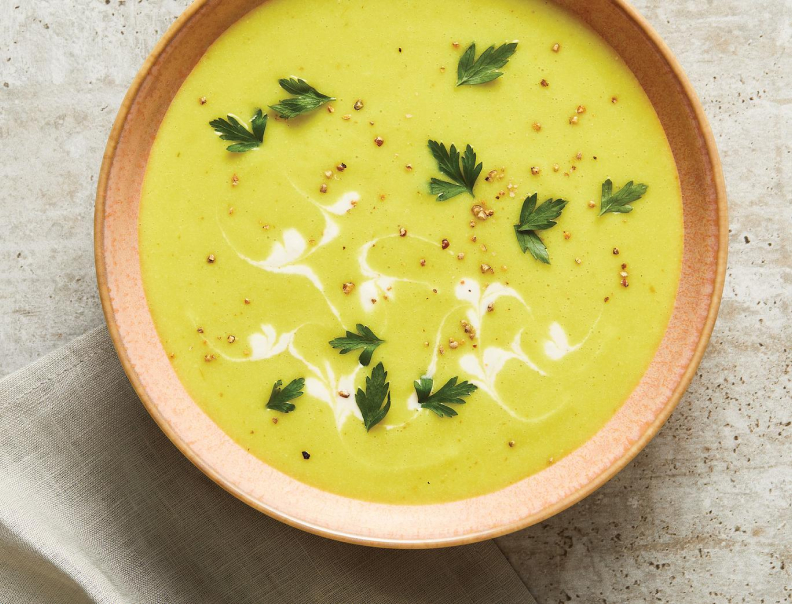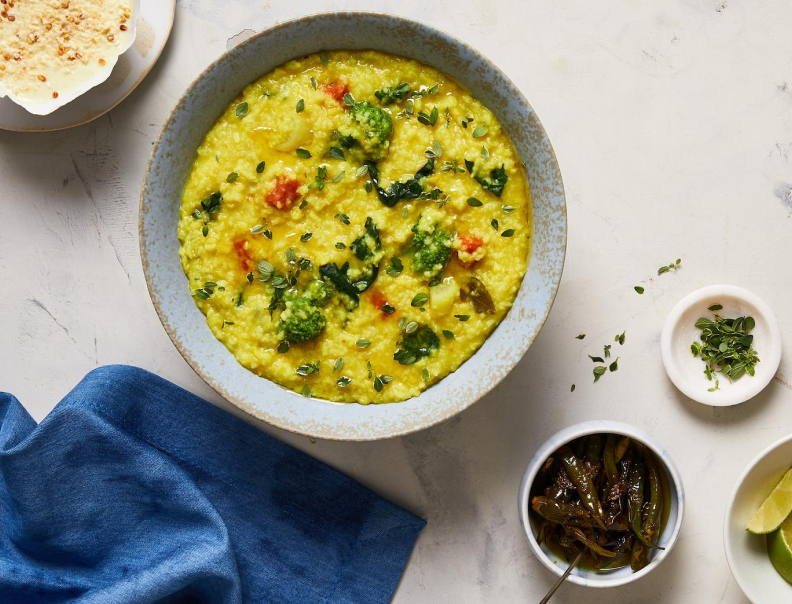[ad_1]
Comforting Fall Recipes to Balance Your Dosha
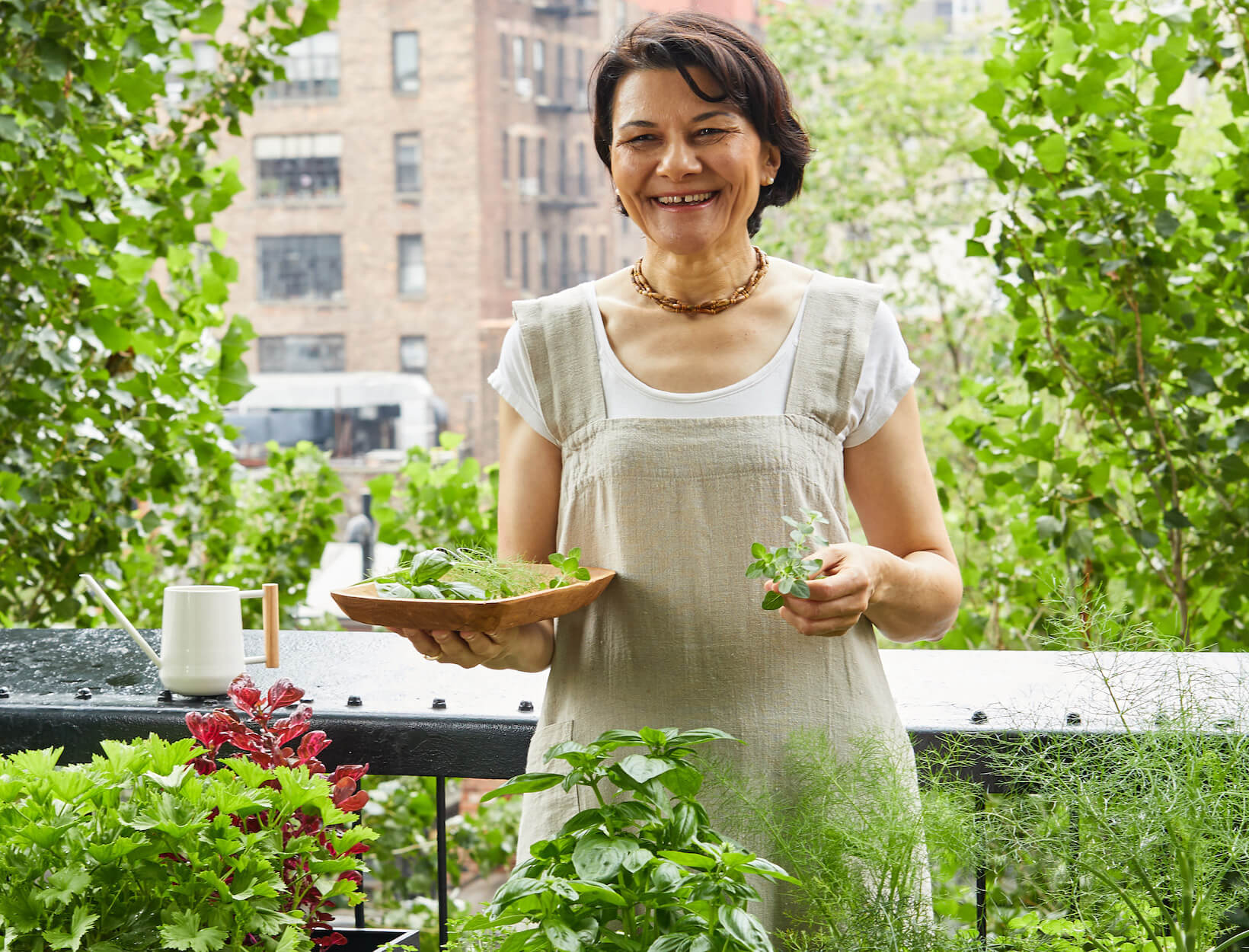
Our bodies are naturally affected by the environment we live in—outdoor and indoor. And we adjust accordingly: When it’s cold, windy, and dry outside, we balance by wearing sweaters, long pants, and scarves. As we adjust our clothing with the change of weather, we also need to modify our food to maintain balance within our bodies. It’s the law of nature, and an Ayurvedic principle that I call the golden rule of balance: Like increases like, and opposites balance.
The colder months bring lots more vata—coldness, dryness, and lightness. To balance with food, we generally need warm, cooked, moist foods. You’ll notice people naturally gravitate toward soups and heavier foods to balance the cold and light energy. We generally need more fat and protein in our diet, and our appetite increases, too.
Adapting according to the seasons can help us stabilize our energy and transition into the seasons more smoothly. We all experience the colder months differently, depending on the state of our dosha.
Here are a few Ayurvedic tips to help balance your energy as the weather cools, along with recipes from my new cookbook, Joy of Balance. To discover and learn more about your dosha type, take a dosha quiz.
VATA
If your vata is very high, you may feel extra challenged during the colder months because of the increased vata qualities in the environment. You’ll need to be particularly aware of the tendency toward dry skin.
Eat
Replacing leafy raw salads with steamed-vegetable salads is especially important for vata dosha. If you continue to eat cold foods—cold salads, smoothies, iced lattes (which naturally increase vata), you can experience cold hands and feet, dry skin, and a sense of ungroundedness.
Limit
Dry foods, like popcorn and crackers.
Try
PITTA
Pitta types have lots of fire energy. When this energy is not in balance, you may easily overheat, develop skin rashes, or become irritable—the heat needs to be released in some form, emotionally or physically.
eat
Staying hydrated is very important. Cooling but cooked foods, like zucchini, fennel, cilantro, coriander seeds, coconut, green beans, and leafy greens (except for mustard greens), can help balance the fire energy.
Limit
Don’t eat fermented foods, like pickles or kimchi, in the fall. Wait until it gets really cold for those. And avoid chilies and deep-fried foods during this time.
Try
KAPHA
Kapha energy is very nurturing, calming, and grounding—like a hug. If you have lots of kapha, you’ll likely enjoy the fall. The fall and winter dryness can have a nice balancing feeling because you have so much moisture in your body. But with the cold weather you may be more prone to becoming congested. If so, add chilies and other pungent spices into your meals.
Eat
Kapha in excess can cause water retention and weight gain. To avoid that, eat foods that are dryer, warm, and light, like seasonal fruits, vegetables, and foods high in fiber. Bitter, pungent, and stringent tastes are great for them, too. A bit of sour, fermented foods is also fine during this season. Chilies, cruciferous vegetables like cauliflower and broccoli, leafy greens, pomegranate, radishes, sunchokes, lentils, and beans are also really good for balancing kapha.
Limit
Anything cold, raw foods (like salads, smoothies, and juices), sugary foods, and too much dairy.
Try
A Fall-Energy-Balancing Recipe for All Doshas
More Cookbooks for Inspiration
Plant-Forward Grilling Recipes from Francis Mallmann’s Green Fire
Celebrating the Beauty of Regional Mexican Cooking in Mi Cocina
We hope you enjoy the book recommended here. Our goal is to suggest only things we love and think you might, as well. We also like transparency, so, full disclosure: We may collect a share of sales or other compensation if you purchase through the external links on this page.
[ad_2]
Source link

